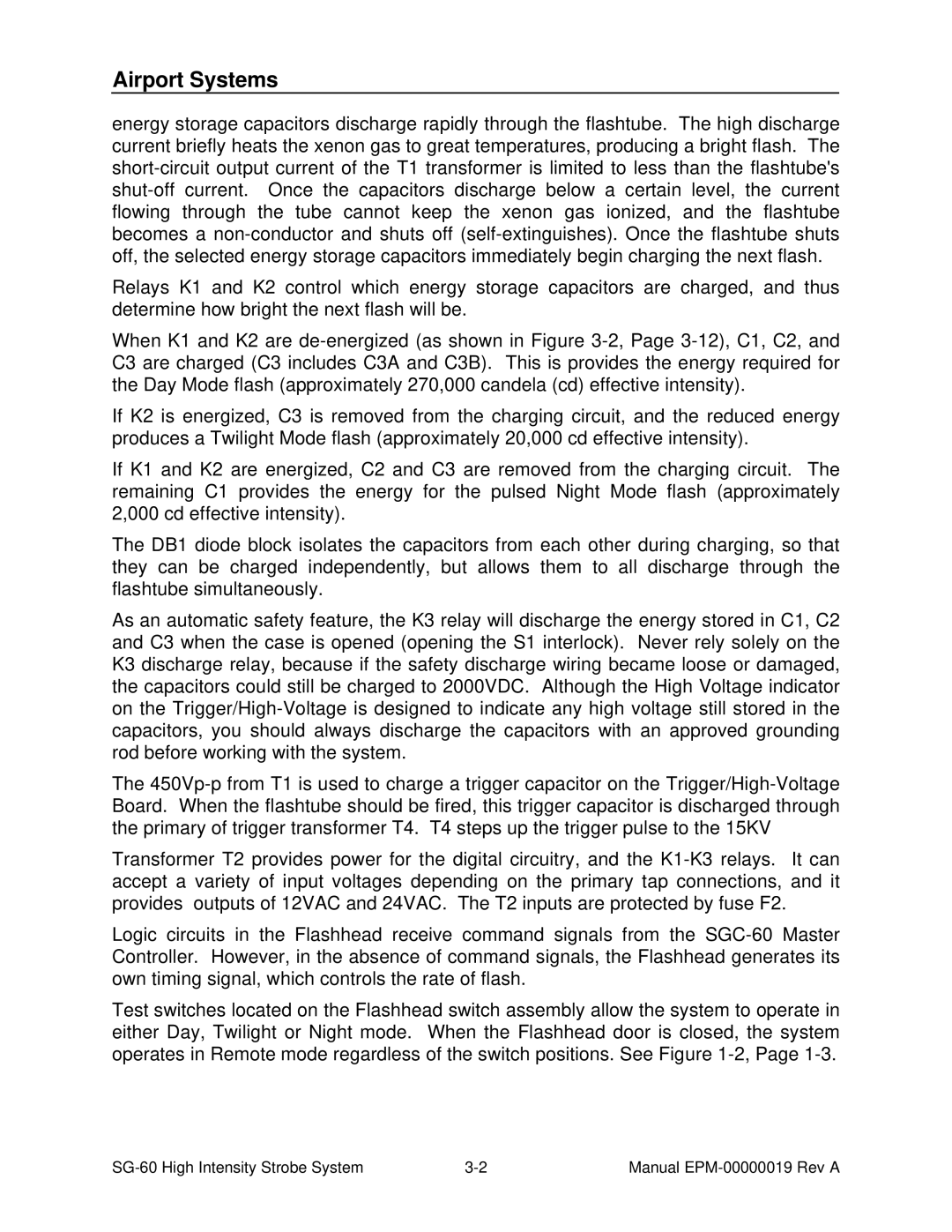Airport Systems
energy storage capacitors discharge rapidly through the flashtube. The high discharge current briefly heats the xenon gas to great temperatures, producing a bright flash. The
Relays K1 and K2 control which energy storage capacitors are charged, and thus determine how bright the next flash will be.
When K1 and K2 are
If K2 is energized, C3 is removed from the charging circuit, and the reduced energy produces a Twilight Mode flash (approximately 20,000 cd effective intensity).
If K1 and K2 are energized, C2 and C3 are removed from the charging circuit. The remaining C1 provides the energy for the pulsed Night Mode flash (approximately 2,000 cd effective intensity).
The DB1 diode block isolates the capacitors from each other during charging, so that they can be charged independently, but allows them to all discharge through the flashtube simultaneously.
As an automatic safety feature, the K3 relay will discharge the energy stored in C1, C2 and C3 when the case is opened (opening the S1 interlock). Never rely solely on the K3 discharge relay, because if the safety discharge wiring became loose or damaged, the capacitors could still be charged to 2000VDC. Although the High Voltage indicator on the
The
Transformer T2 provides power for the digital circuitry, and the
Logic circuits in the Flashhead receive command signals from the
Test switches located on the Flashhead switch assembly allow the system to operate in either Day, Twilight or Night mode. When the Flashhead door is closed, the system operates in Remote mode regardless of the switch positions. See Figure
Manual |
